Searsville Dam: It's Complicated
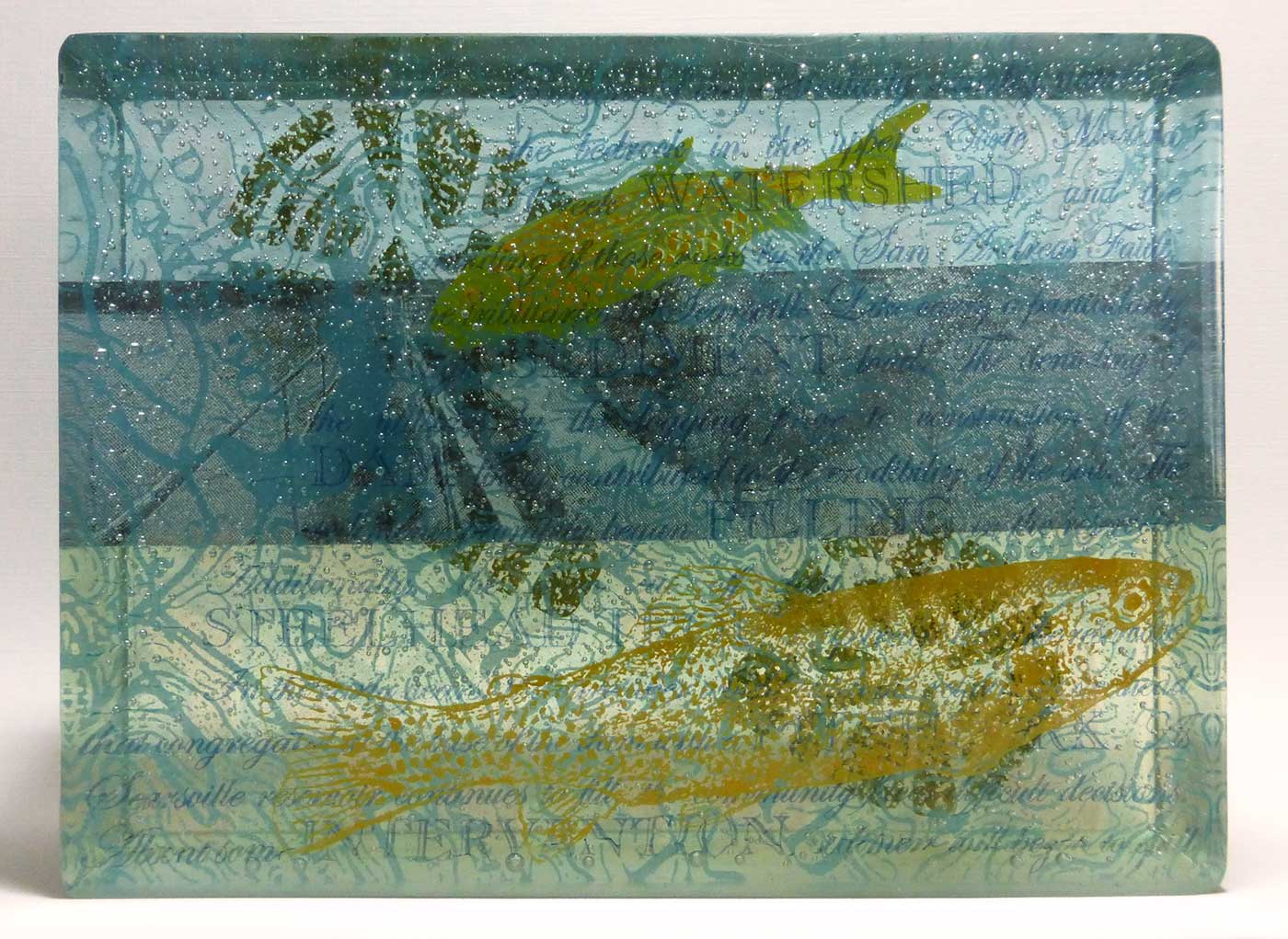
Title: Searsville Dam: It's Complicated
Year: 2013
Dimensions: 6"h x 8"w x 2" d
Sheet glass, glass enamels, glass powder
Created during a workshop taught by Jeffrey Sarmiento at the Pilchuck Glass School. This block is made of 16 layers of 3mm glass. Eight of the layers have images or color and they are alternated with layers of clear glass. The images were printed using a photoresist screenprinting technique. Both glass enamel paints and powdered glass were used in combination with the screens. The individual layers are documented below. Most of the images and text relate to the Searsville Dam, located on the Jasper Ridge Biological Preserve, Stanford University. Click on the thumbnails below to see a larger version of the image.
Details: Scroll down for information about the individual layers in this artwork and the process of making them.
Additional Artwork Information

These are the different layers, in the order they were stacked together for fusing

Photograph of Steelhead Trout screenprinted with glass enamel paint on glass. To make the silkscreen design, first the image of the steelhead trout is printed on a clear transparency film. Then a photo emulsion resist is applied to the silkscreen. The printed transparency film is placed on top of the silkscreen and exposed to UV light.. The parts of the photo emulsion that were not exposed to UV light (because they were blocked by the printed parts of the transparency) wash off, leaving open areas on the screen for the enamel paint to pass through. Orange colored glass enamel was then screenprinted onto the glass through the openings in the photo resist.

Text about Searsville Reservoir from Creek and Watershed Map of Palo Alto and Vicinity, by Janet M. Sowers for Oakland Museum of California screenprinted with glass enamel paint on glass. Using the same process as described above, blue colored glass enamel was screenprinted onto the glass.
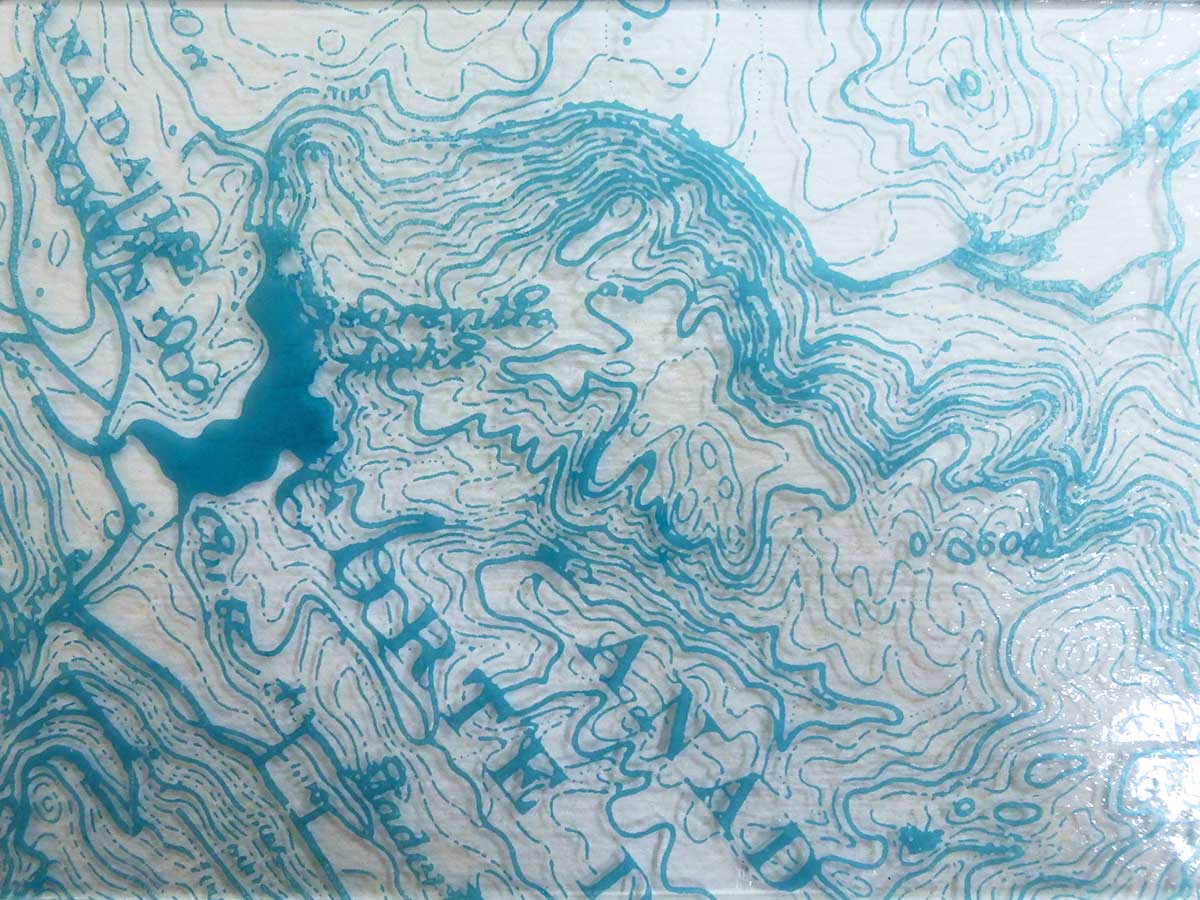
1897 topographic map of Searsville Reservoir and surrounding land screenprinted with glass enamel paint on glass. A photo emulsion resist was applied to the silkscreen and exposed with a print of the map. Using the same process as described above, turquoise colored glass enamel was screenprinted onto the glass.
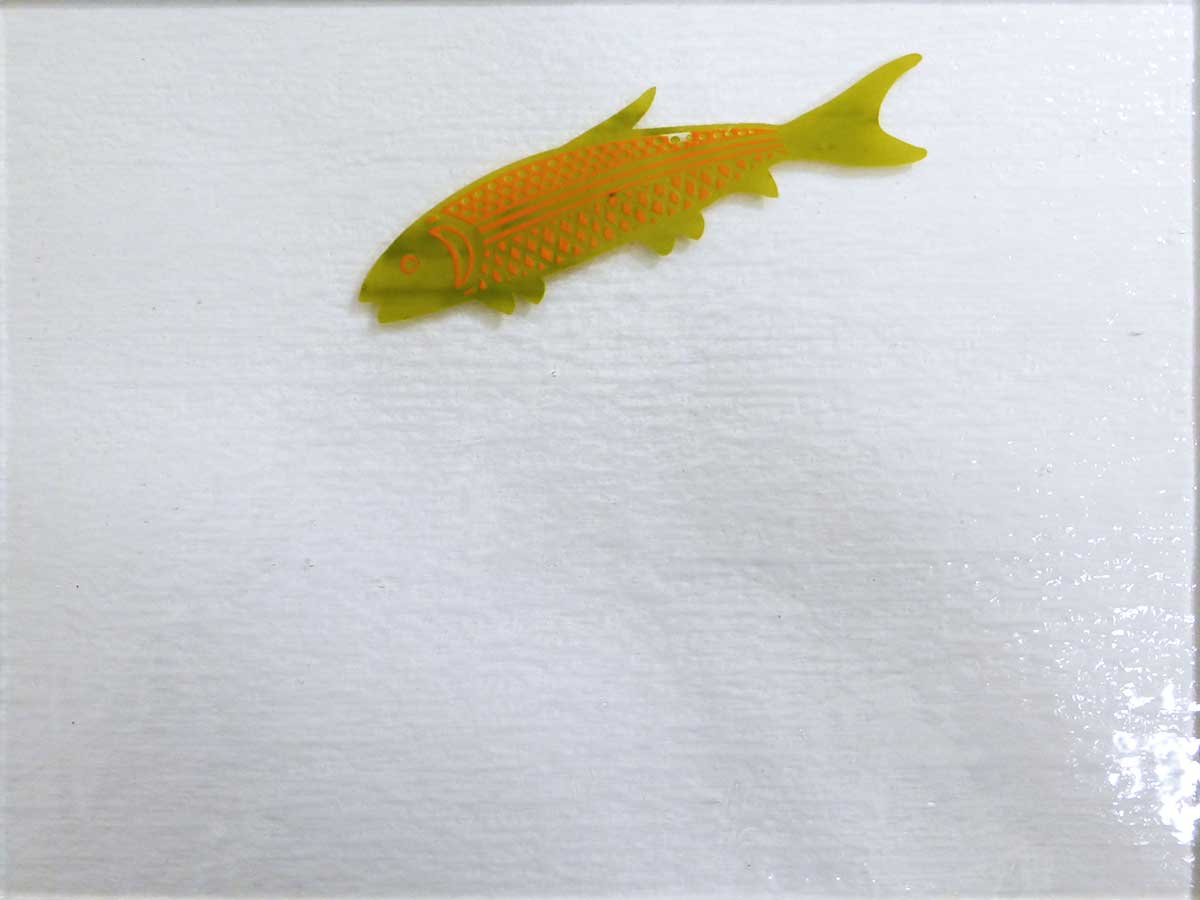
Stylized fish design inspired by Indigenous fish designs. Screenprinted in two colors, green and orange. This was a two step process where two images were created for the fish - one for the green color and one for the orange. Registration marks are required to align the second screen so that the second color is placed correctly. First the green colored glass enamel was screenprinted onto the glass. When the green paint was dry, the orange colored glass enamel was screenprinted.
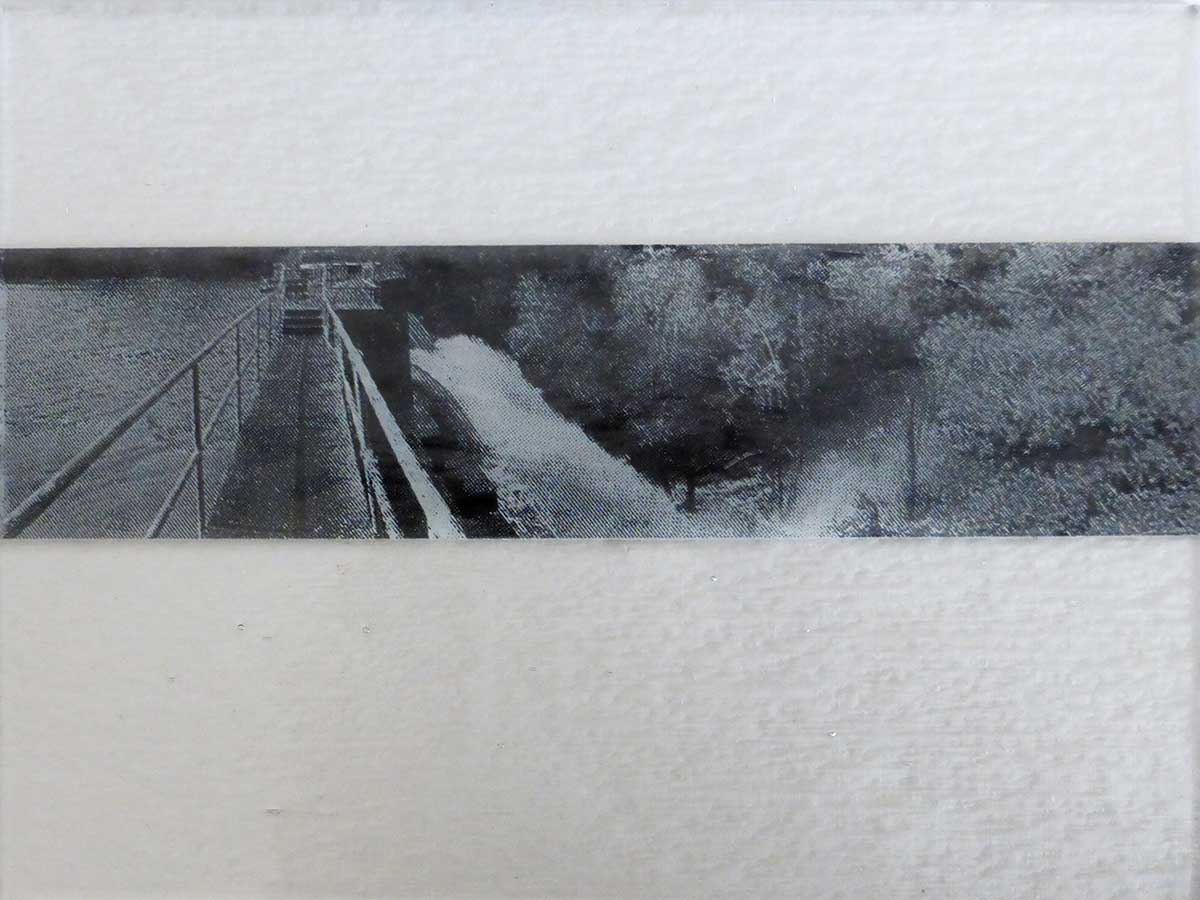
Photograph of Searsville Dam. Screenprinted in two colors, black and white, so that image is visible from both sides of the glass. This was a two step process where two images were created for the photograph - one for the black color and one for the white. Registration marks are required to align the second screen so that the second color is placed correctly.. First the black colored glass enamel was screenprinted onto the glass. When the black paint was dry, the white colored glass enamel was screenprinted.
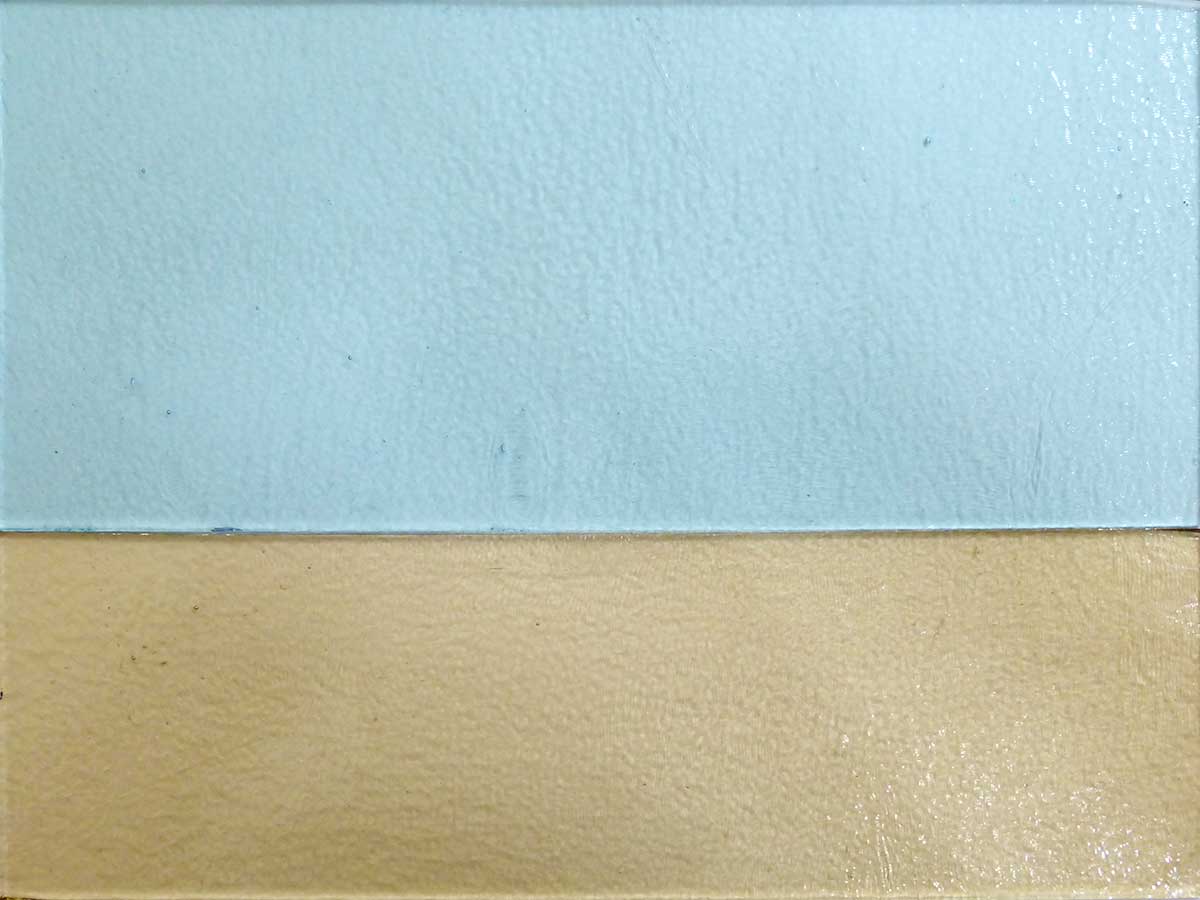
Layer of tinted glass to add color interest - two tints were used (one aqua and one amber colored). The border between the tints lines up with the photograph of the dam.

Line-art image of a boot print screenprinted with glass enamel paint on glass. Brown colored glass enamel was then screenprinted onto the glass.
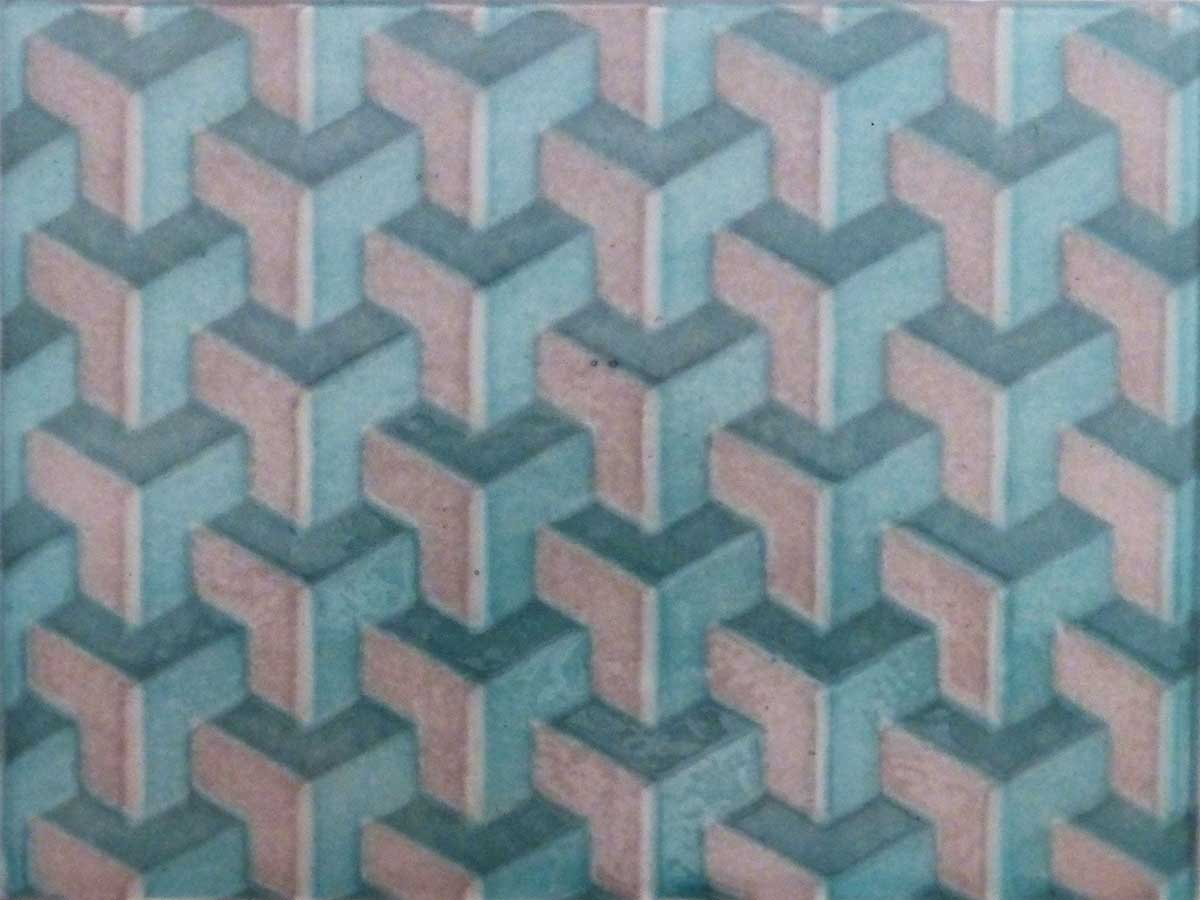
Image of geometric blocks (the design alludes to the stacked concrete block design of Searsville Dam), screenprinted using three colors of glass powder: rose, blue, and gray. A coarser silk screen is used to allow the glass powder to pass through. This was a three step process where three images were created for the different colors in the design. Each color of powder is screened onto the glass and then fused in the kiln before it was incorporated into the final glass block.